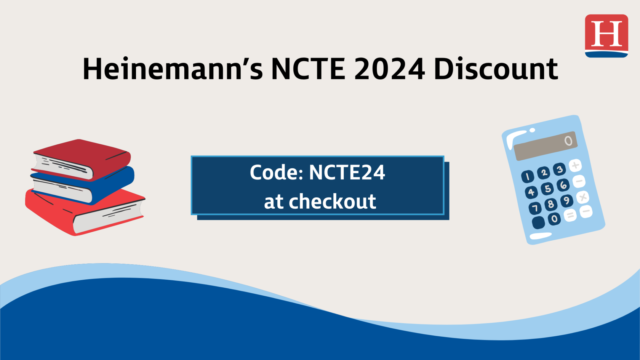
Teachers must begin sharing our stories, not just our strategies. Teachers in their first five years, veteran teachers, international educators, former teachers, and administrators. We all have something to share.
The following is adapted from The First Five, a Love Letter to Teachers by Patrick Harris II
It’s so easy as educators to get stuck in your school’s quicksand. Change and innovation in schools feels impossible when you are a soldier of one. One school, one team, one classroom.
My understanding of change has evolved over the years. My current beliefs are a sum of my experiences in several schools and the ways I have reframed them using my belief in emergent strategy by Adrienne Maree Brown. At its core, emergent strategy is a practical philosophy for doing complex social justice work, rooted in simple beliefs of relationship, trust, and small action (brown 2017, 22–23). She shares that change is as natural as the elements. (There’s a reason why trees last for hundreds of years.) We must see through the depths of our shared humanity and begin to move in harmony. In order to make sustainable change in social justice work, she has taught that sustainable change happens when we understand how interconnected we all are. Us. We.
To sustain myself in the profession, I had to process my own beliefs about change. I know I’m not alone with having an unspeakable frustration with the ways our country and systems leave the needs of children and teachers out to dry. Our frustration with the system is one of the biggest reasons why teachers quit and a part of this is a misunderstanding of how change happens. I want you here for the long haul. So it can be helpful to examine what happened through the lens of emergent strategy. Informed by brown’s core principles, here are my beliefs about change in schools:
Effective change is slow and small.
Change is about relationships, not just about strategy.
Change reveals our interconnectedness.
Systems of power are upheld by people.
Change is constant.

Effective change is slow and small.
I have learned through failure, through conversations, and through relationships that dreaming big means thinking small. Brown teaches us that small change is still a reflection of the larger system. As cheesy as it sounds, planting the seed still matters.
So, that risk you take in your classroom still counts. Developing a plan even though it does not get adopted still matters. Organizing a protest and a list of demands still counts. Scheduling a meeting to build a connection still counts. Change, particularly in schools, is slow and it starts small. This is because everyone wants buy-in. And in theory this is a good thing. We cannot make change without having us all onboard. When we start small, this can still lead to big change. You may not be the one who waters the seed or feeds it or ensures it gets sunlight on cloudy days. But, roses, even in concrete, don’t grow without seeds.
Change is about relationships, not just about strategy.
I have learned that making change in school is hardly ever about how good your plan is. You can spend all day and all night dotting your i’s and crossing your t’s, and include the latest research, but if you do not have the relationships with the people who the change will impact, it is useless. Relationships in education are measured by trust. It took me a long time to learn this. I used to think my administrators, colleagues, students had to “like” me. You know what I mean? Being liked is a temporary feeling and it is something you hardly have any control over. Trust is more long-lasting. Trust is measurable. Trust is something you can plan for. And so, while I may not always like my administrators, I have to figure out if I can trust them to make the best decisions for the students and educators in the building. And they have to know they can trust you.
As humans, particularly adults, we do not work well together unless we have a certain level of trust. If we are moving towards change, trust is a very necessary component. This requires intentionality and risk-taking. Self-awareness and evaluation. We must be intentional about building trust with our students and their families. And our colleagues and administrators. We must respect that this trust takes time, depending on the person. Trust also requires risk-taking. Sometimes we are in the building stages of developing a relationship or a relationship is rocky. We can still choose to trust one another. In some cases, we have to choose to trust one another. Give the plan a chance, even if you think it may fail. Allow colleagues and administrators to voice their opinions; it may push the conversation forward. If we don’t trust people, we can’t build relationships. And without relationships, change is impossible.
This also means knowing and engaging with opposing views. I’m talking about people who have a different experience than you and simply disagree with your ideas (not your humanity). I choose to believe that we all have the same end goal in education: to prepare heathy and whole young people to thrive in the world. But we all have different ways of getting there. It is our duty and responsibility to affirm our shared humanity and give space to have dialogue.
Change reveals our interconnectedness.
Change is often coupled with fear. How will this impact me? The more we discuss change in schools, the more we reveal how connected we all are. What we do as teachers impacts our administrators. The activities we plan impact custodial staff. Deciding to renovate a building impacts the surrounding community. The laws and policies created by local school boards impact teachers. And all of the ways we make decisions in education impact young people. Period.
An easy way to think about interconnectedness is to consider the way the building shifts when someone is absent. You know that feeling when you come in and the hallway is quieter than normal. Or when you go down to pick up your class for the start of the day and you see a substitute. “They’re not here today?” You may acknowledge a shift in your energy. This is showing how interconnected we all are. So when we are considering the ways we can make change, we have to consider how everyone is impacted by that change. Remember, we want to make system change because it’s long-lasting. And if we are changing systems, then we must know that everyone is impacted by this. As we are devising our plans, it is healthy for us to acknowledge the ways our interconnectedness will be impacted by change. With this interconnectedness, we should see the value of interdependence and shared leadership.
Change is constant.
Change is always happening. We teach ourselves and our children that “we cannot be what we cannot see.” And there is some validity to this, but this invalidates the power of the imagination. This invalidates the work that is happening all around us. It may be hard because our system tricks us to think we are alone in this work. In our own classroom, in our school, in our own community. Scholars, teachers, parents, students, community members are fighting for students every day in every capacity that they can. If we believe that change is not happening in our education system, then we must do more research. Did you know that there are grassroots activists in New Mexico working to eradicate standardized testing? Do you notice that education, whether it’s good, bad, or ugly, is a part of national conversations more than ever? Do you remember the ways that Black people created their own schools when white people wouldn’t teach them to read? And so as long as change happens, it will be continuous. Change sparks more change.
Teachers are agents of change by design. In order for us to sustain ourselves in this work, we have to understand the ways that change happens. We have to interrogate our own views about change. We have to continue to have hope that change is possible. We must know that change is relational. So as long as we can be intentional and we can value our shared humanity, anything is possible.

Adapted from The First Five. To learn more, visit Heinemann.com.


